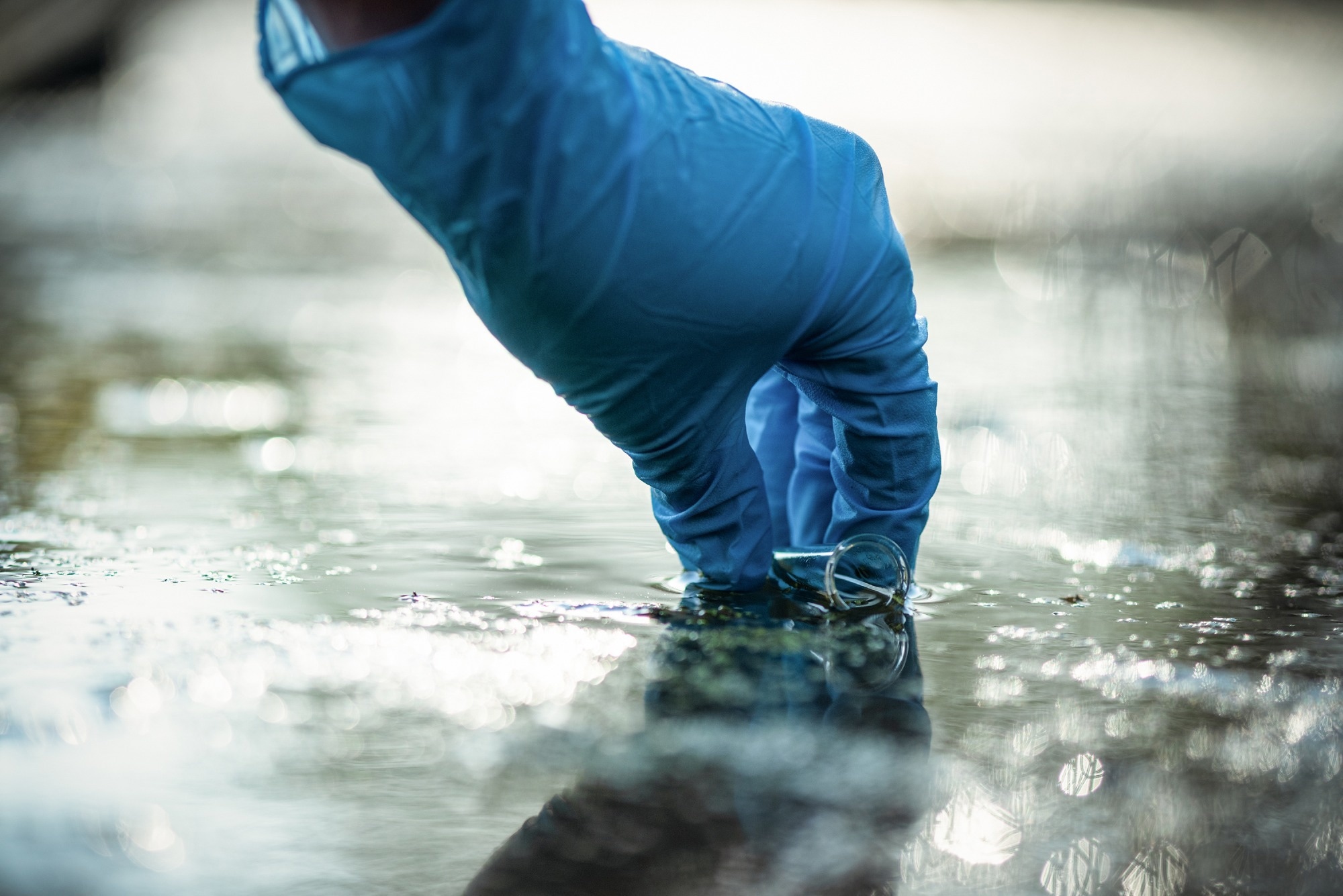A recent study published in the Science of the Total Environment Journal evaluated the presence of coronavirus disease 2019 (COVID-19) drugs in river water and their effects on microalgae and cyanobacteria.
 Study: COVID-19 pharmaceuticals in aquatic matrices: The threatening effects over cyanobacteria and microalgae. Image Credit: Happy_Nati/Shutterstock.com
Study: COVID-19 pharmaceuticals in aquatic matrices: The threatening effects over cyanobacteria and microalgae. Image Credit: Happy_Nati/Shutterstock.com
Background
Repositioned drugs were adopted in some countries to treat COVID-19 symptoms before a vaccine or treatment was available. In Brazil, the COVID kit comprised azithromycin (AZI), hydroxychloroquine (HCQ), and ivermectin (IVE), among other drugs.
Because these drugs are not fully absorbed, they are eliminated in urine and feces. Therefore, increased use of these drugs may endanger the aquatic environment due to their toxic effects on the aquatic biota.
These drugs have been reported to be present in aquatic systems in different regions even before the COVID-19 pandemic. The presence of pharmaceutical compounds in aquatic systems can have negative effects.
The adverse effects of these drugs may stem from the action of the original molecule or its metabolites. Although the concurrent existence of AZI, HCQ, and IVE is expected in water bodies, their interactions and risks are undefined.
About the study
In the present study, researchers examined the levels of IVE, HCQ, and AZI in samples from Brazilian rivers and their impact on the growth, oxidative metabolism, and photosynthesis of cyanobacteria and microalgae. Water samples were collected from three urban rivers (Iguaçu, Belém, and Barigui) between August and September 2020. Overall, nine samples were collected, three from each site.
Samples were filtered through glass fiber membranes and concentrated by solid-phase extraction, followed by liquid-chromatography tandem mass spectrometry (LC-MS) analysis.
Analytical grade AZI, HCQ, and IVE were used to generate calibration curves. Recovery of drugs was determined by spiking samples with a four μg/L drug mixture, and the limit of quantification (LOQ) was estimated.
Stock cultures of Synechococcus elongatus (Cyanobacterium) and Chlorella vulgaris (microalga) were obtained and maintained. Sterile culture plates were inoculated with stock cultures corresponding to 5 x 105 C. vulgaris cells and 1.3 x 106 S. elongatus cells and exposed to drugs for 72 hours at variable concentrations (2 μg/L to 200 μg/L).
The cumulative effect of the binary or tertiary drug combinations was also assessed at zero or two μg/L concentration of each drug.
The specific growth rate (GR), net photosynthetic rates (Pn), and catalase activities were evaluated. The hazard quotient determined the environmental risk and the potential of drugs to cause adverse effects.
Findings
The researchers detected IVE and AZI in all samples. Only HCQ did not have a 100% detection rate. The mean concentrations of drugs were the highest in samples from the first site (Barigui river). The GR was lower for S. elongatus with AZI or HCQ exposure, irrespective of drug concentrations, while IVE did not impact the GR.
The GR of C. vulgaris was negatively impacted by drugs, irrespective of their concentrations. The lowest half-maximal effective concentration (EC50) was observed for IVE and HCQ for C. vulgaris and S. elongatus, respectively. S. elongatus exposed to HCQ and AZI had higher GR than individual drug exposure.
Likewise, exposure to HCQ and IVE caused higher GR than individual treatment. However, the GR was the lowest when these cells were exposed to all three drugs concurrently. There was a significant decline in Pn for S. elongatus for all treatments.
Cells treated with AZI and HCQ had lower Pn than those exposed to AZI alone. Further, Pn was lower for cells treated with HCQ or all three drugs.
S. elongatus with combined exposure to HCQ and AZI or IVE and HCQ had higher catalase activity than those exposed to individual drugs. Likewise, catalase activity was higher in cells treated with all three drugs than in those treated with HCQ or IVE alone.
For C. vulgaris, the GR was higher for all drug combinations than individual drugs, and Pn was negatively impacted in all treatments.
C. vulgaris cells had lower Pn with combined IVE and HCQ treatment than those treated with IVE alone. Pn of C. vulgaris was lower when exposed to all three drugs compared to combined IVE and AZI treatment or IVE-only exposure. Higher catalase activities were observed for all treatment combinations.
Conclusions
In sum, the researchers demonstrated the presence of three drugs used for COVID-19 in urban Brazilian rivers. The Cyanobacterium was more sensitive to the drugs than the microalga.
IVE exposure significantly impacted photosynthesis for both species. For the Cyanobacterium, additive effects of IVE and AZI and antagonistic effects of HCQ and AZI or IVE and HCQ were observed.
Drug combinations did not affect the growth of the microalga but impacted photosynthesis. Overall, the findings raise concerns about the consequences of the indiscriminate use of drugs on the ecosystem and the need for future studies to assess the long-term risk.
-
Marques, R. et al. (2023) "COVID-19 pharmaceuticals in aquatic matrices: The threatening effects over cyanobacteria and microalgae", Science of The Total Environment, 892, p. 164309. doi: 10.1016/j.scitotenv.2023.164309. https://www.sciencedirect.com/science/article/pii/S0048969723029303
Posted in: Medical Science News | Medical Research News | Miscellaneous News | Disease/Infection News
Tags: Azithromycin, Chromatography, Coronavirus, Coronavirus Disease COVID-19, covid-19, Cyanobacteria, Drugs, Hydroxychloroquine, Ivermectin, Mass Spectrometry, Metabolism, Metabolites, Molecule, Pandemic, Photosynthesis, Spectrometry, Vaccine

Written by
Tarun Sai Lomte
Tarun is a writer based in Hyderabad, India. He has a Master’s degree in Biotechnology from the University of Hyderabad and is enthusiastic about scientific research. He enjoys reading research papers and literature reviews and is passionate about writing.
Source: Read Full Article





